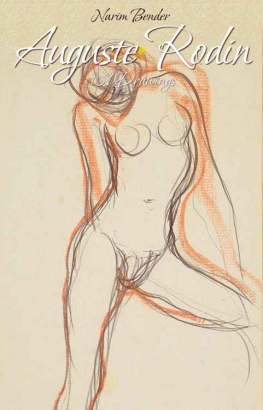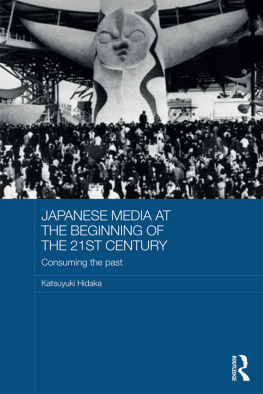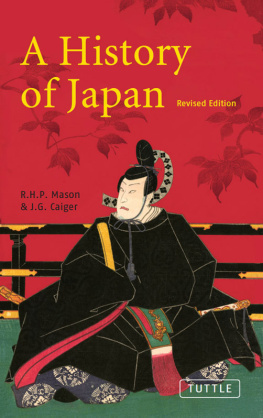Taiko Boom
ASIA: LOCAL STUDIES/GLOBAL THEMES
Jeffrey N. Wasserstrom, Kren Wigen,
and Hue-Tam Ho Tai, Editors
Taiko Boom

JAPANESE DRUMMING IN PLACE AND MOTION
Shawn Bender

University of California Press, one of the most distinguished university presses in the United States, enriches lives around the world by advancing scholarship in the humanities, social sciences, and natural sciences. Its activities are supported by the UC Press Foundation and by philanthropic contributions from individuals and institutions. For more information, visit www.ucpress.edu .
University of California Press
Berkeley and Los Angeles, California
University of California Press, Ltd.
London, England
2012 by The Regents of the University of California
Library of Congress Cataloging-in-Publication Data
Bender, Shawn Morgan.
Taiko boom : Japanese drumming in place and motion / Shawn Bender. 1st ed.
p. cm. (Asia : local studies/global themes ; 23)
Includes bibliographical references and index.
ISBN 978-0-520-27241-5 (cloth : alk. paper)
ISBN 978-0-520-27242-2 (pbk. : alk. paper)
1. TaikoJapanHistory. 2. Taiko (Drum ensemble)JapanHistory. 3. MusicJapan. 4. Musical instrumentsJapan. 5. JapanSocial life and customs. I. Title.
ML1038.T35B46 2012
786.90952dc23 2012010917
Manufactured in the United States of America
21 20 19 18 17 16 15 14 13 12
10 9 8 7 6 5 4 3 2 1
In keeping with a commitment to support environmentally responsible and sustainable printing practices, UC Press has printed this book on Rolland Enviro100, a 100% post-consumer fiber paper that is FSC Certified, deinked, processed chlorine-free, and manufactured with renewable biogas energy. It is acid-free and EcoLogo certified.
To my family, for their love and support
CONTENTS
PART ONE
THE EMERGENCE AND POPULARIZATION OF TAIKO
PART TWO
DISCOURSES OF CONTEMPORARY TAIKO
ILLUSTRATIONS
FIGURES
For additional images related to this book, visit www.ucpress.edu/go/taikoboom
ACKNOWLEDGMENTS
My first encounter with taiko drumming occurred quite by chance during my first visit to Japan in 1992. Out of an awareness of my interest in drums and perhaps some annoyance at the incessant finger tapping on the table in our shared office, a work colleague suggested that I check out a Japanese drum workshop he saw advertised at a community center in Kyoto. Little did I know at the time that this one-day taiko workshop would turn into a book project that would take over ten years to complete. Along the way, my passion for the subject has been stoked and supported by a great number of people to whom I remain deeply indebted.
David K. Jordan has been enthusiastic about my research on taiko since I first proposed it as a doctoral dissertation topic. He has been a constant voice of reason and a tireless editor, and this book is much improved as a result of his constructive criticism. Many of the intellectual perspectives that guide the book were developed first in graduate seminars at the University of California, San Diego, with Michael Meeker, who challenged me to think in new ways about theory, anthropology, and scholarship. I am also grateful to Japanese studies faculty at UCSD, especially Stefan Tanaka and Christena Turner, for sharing with me their insights into Japanese society. As part of my doctoral committee, Suzanne Brenner and George Lipsitz offered helpful suggestions that encouraged me to think in new ways about my research. The Interfaculty Initiative in Information Studies at the University of Tokyo hosted me during the sabbatical year in which I completed this book. Over the year, Jason Karlin lent a sympathetic ear and offered precious feedback on many of the chapters that follow.
Freddy Bailey, Jeffrey Bass, Marc Moskowitz, James Ellison, Alex Bates, and Christopher Bondy kindly gave me comments on early drafts of chapters, and the book is much better for their suggestions. Mizuho Zako of Oedo Sukeroku Daiko and Melanie Taylor of Kodo proofread portions of the text and saved me from many embarrassing errors. David Leheny, David T. Johnson, and Greg Noble gave me sage advice as the book neared completion. The development of the ideas presented here has also benefited from conversations over the years with Sharla Blank, Bambi Chapin, Steven Carlisle, Zachary Orend, Laura Gonzalez, Ethan Scheiner, Sherry Martin, Richard Miller, Deborah Wong, Riikka Lnsisalmi, Yoshitaka Terada, Toshio Ochi, Eri Yoshikawa, Takahiro Sakayama, Gill Steel, Helene Lee, Erik Love, and Suman Ambwani. E. Taylor Atkins, Jennifer Milioto Matsue, and one anonymous reviewer read through the complete manuscript, and their thoughtful comments helped improve it considerably. All errors that remain are, of course, my own.
Research for this book was funded by grants from the Japan Foundation, the Social Science Research Council/Japanese Society for the Promotion of Science, the Japanese Ministry of Education (Monbusho), the UCSD Department of Anthropology and Japanese Studies Program, and the Dickinson College Research and Development Committee. I have been fortunate to receive support in this project from many members of the North American taiko community, especially Roy and P.J. Hirabayashi, Alan and Merle Okada, and Wynn and Brian Yamami. I am thankful to the members of Kodo for granting me access to their organization and for lending me time for interviews over the course of my extended research with them. Sat Ryji, Negishi Toshiaki, and Nishita Tar each took an exceptionally strong interest in my research and gave generously of their time. And though their stories dont appear on these pages, my hosts on Sado Island, the Kusaka family, who put a roof over my head and taught me much about life in rural Japan, deserve thanks for their warm hospitality.
Kiyomi Kushida of the Inter-University Center for Japanese Studies helped arrange institutional support for me at the University of Tokyo, provided me with a wealth of scholarly data on the Japanese folk performing arts, and pushed me to improve my understanding of classical and folk performance in Japan. Yoshitaka Terada shared with me his knowledge of buraku taiko and introduced me to the drummers of Taiko Ikari, for which I am deeply grateful. I also appreciate the cooperation of Nitagai Kamon and Robert Robin Early, who were both integral to the smooth start of my fieldwork in Tokyo, and to the members of Sukeroku Daiko, Nihon Taiko Dj, and the group I call Miyamoto Daiko for accepting me into their ranks as a beginning drummer. Osuwa Daiko, Oedo Sukeroku Taiko, Kodo, Miyamoto Unosuke Company, Asano Taiko Corporation, Hayashi Eitestu, and Kenny Endo graciously gave me permission to use their beautiful images in this book and on the books website. Back home, the analysis of my research data would have taken much longer without the transcription of Japanese interviews by my research assistants Nakamachi Midori, Osone Riiko, Shinohara Emi, and Takazawa Chie.
A version of provided the basis for the article Drumming from Screen to Stage: Ondekoza daiko and the Reimaging of Japanese Taiko (Journal of Asian Studies 69:843867).
I would like to thank my family, to whom this book is dedicated, and the many friends who have encouraged me over the years as I pursued this project. Their gentle prodding helped make this book a reality. Finally, I want to express my gratitude to my many editors at the University of California Press, especially Kren Wigen and Reed Malcolm. Their enthusiasm, patience, and professionalism were much appreciated as this book made its way through the process of publication.
Next page












